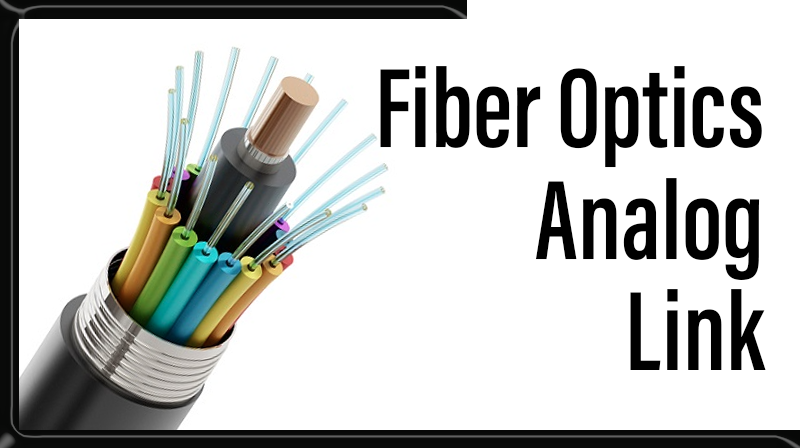
Fiber Optics Analog Link
Aim
To Study the fiber optic analog signal transmitting and receiving through plastic fiber cable.
Apparatus Required
- Fiber Optics Analog Transmitter Module – 01
- Fiber Optics Analog Receiver Module – 01
- Plastic Fiber cable 1 meter – 01
- CRO – 01
- Adapter +15V/ DC – 02
- Patch Chords – 06
Theory
Fiber Optic Analog Link
The Fiber Optic Analog Link consists of a transmitter which converts an electrical signal to a light signal, an optical fiber to guide the light and a receiver which detects the light signal and converts it to an electrical signal. Light sources are either light emitting diodes (LED‘s) or laser diodes and detectors are phototransistors or Photodiodes
Transmitter
The heart of the transmitter is a light source. The major function of a light source is to convert an information signal from its electrical form into light. Today’s fiber-optic communications systems use, as a light source, either light-emitting diodes (LEDs) or laser diodes (LDS). Both are miniature semiconductor devices that effectively convert electrical signals into light. They need power-supply connections and modulation circuitry. All these components are usually fabricated in one integrated package. Transistor based driver circuit need for this type LEDs.
Optical fiber
The transmission medium in fiber-optic communications systems is an optical fiber. The optical fiber is the transparent flexible filament that guides light from a transmitter to a receiver. An optical information signal entered at the transmitter end of a fiber – optic communications system is delivered to the receiver end by the optical fiber.
Model Diagram for Plastic Fiber cable
This is multi mode plastic fiber cable, in this fiber cable core diameter 1000 micron and fiber cladding index 1.402.
Receiver
The key component of an optical receiver is its photo detector. The major function of a photo detector is to convert an optical information signal back into an electrical signal (Photocurrent). The photo detector in today’s fiber – optic communications systems is a semiconductor photodiode (PD). This miniature device is usually fabricated together with its electrical circuitry to from an integrated package that provides power-supply connections and signal amplification.
Procedure
- Connect +15V adapter to both transmitter and receiver module
- Switch (sw1) ON the transmitter Module and CRO
- Connect the CRO Probe, positive to P1 and negative to P7 Ground.
- Now check the sine wave output on CRO and vary the Frequency and Amplitude pot meter min to max range.
- And set the sine wave output 1 Vpp/ 1 KHz.
- Connect P1 and P8 using patch chord.
- Connect the CRO positive to P9 test point and check the limiter output.
- Connect P9 and P10 test point using patch chord.
- Connect the 1 m Plastic fiber cable between transmitter module LED to receiver module Photo Diode.
- Switch (sw1) ON the receiver Module.
- Connect the CRO probe positive to receiver module P2 test point and negative to P3 test point. Now we get received sine signal.
- Connect P2 and P4 using patch chord.
- Now get an amplified output on P5 test point.
- Connect P5 and P6 using patch chord.
- Check the analog output on test point P7.



